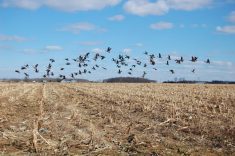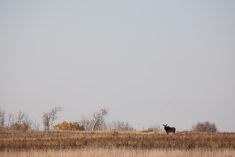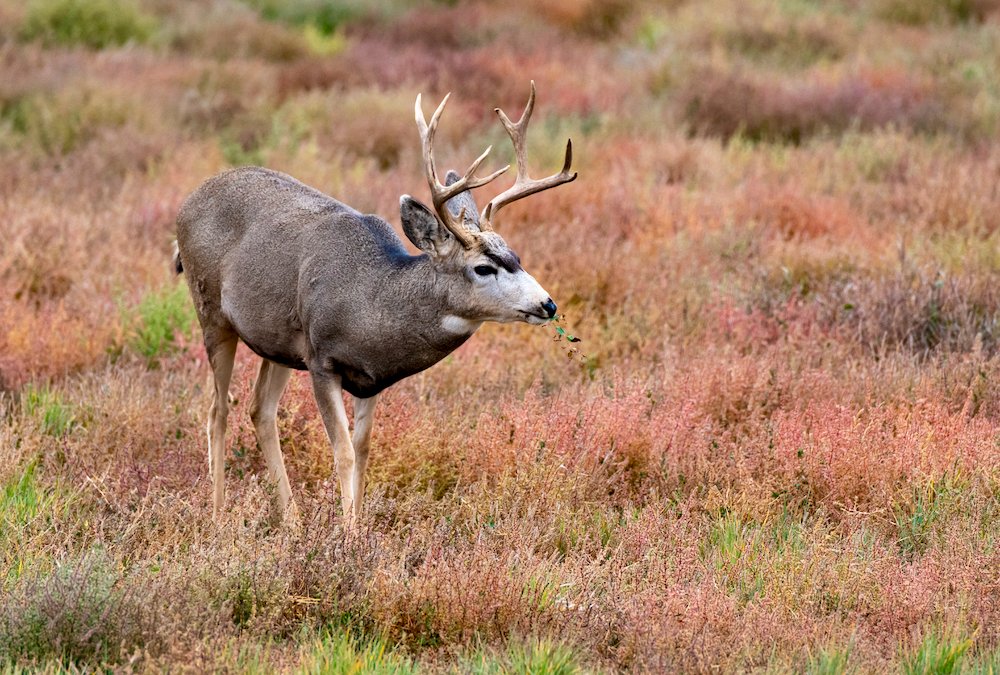Anyone planning to hunt in British Columbia may soon be blocked from bringing in urine and other materials from other provinces’ farmed elk and cervids, in a bid to keep chronic wasting disease (CWD) in check.
The provincial government recently opened a public comment period, running until Jan. 19, on a list of changes it proposes to make to various hunting and trapping regulations between April this year and the end of March 2020.
Among the proposed new rules is a ban on “any part or derivative of a deer, elk, moose or caribou, sourced from outside B.C., to be used for the purpose of hunting or trapping.”
Read Also

U.S. livestock: Cattle strength continues
Cattle futures on the Chicago Mercantile Exchange were stronger on Friday, hitting fresh highs to end the week.
CWD is a member of the transmissible spongiform encephalopathy (TSE) family of diseases such as BSE in cattle, scrapie in sheep and Creutzfeldt-Jakob disease in people.
B.C.’s Wildlife Health Program has monitored for CWD since 2002 and has yet to find an infected animal in the province, the government said, noting CWD has been seen in Alberta and Saskatchewan and is known to be “moving west toward the B.C. border.”
The infectious abnormally-folded proteins, or prions, that cause CWD are present in tissues and “biological materials” from infected cervids, particularly in body fluids such as urine, the B.C. government said in a proposal document.
Urine and other such materials are used to make attractants for use by hunters, and are “frequently” collected from farmed cervids in jurisdictions outside the province, the government said.
The impact of CWD on native cervid populations and the disease’s spread have already led “several” jurisdictions elsewhere to set up bans on such products containing biological material from cervids.
“There is little regulation in the production of these materials, they are usually available without labelled information on their origin and cervid farms in two Canadian provinces and 21 U.S. states are known to be or have been infected by CWD,” the provincial government said.
The province described such attractants as “a potential route of introducing CWD to new jurisdictions, including B.C.”
Evidence suggests CWD prions can pass from animal to animal by direct contact or through contaminated feed, soil, and/or water sources with saliva, urine and/or feces from infected animals.
No evidence has yet shown CWD can affect humans, but the World Health Organization and other such bodies recommend against eating meat or consuming any products from animals known to be infected with any TSE disease.
CWD-infected deer and elk show abnormal behaviour accompanied by progressive weight loss. In later stages, animals with CWD show signs of extreme weight loss, repetitive behaviour, drowsiness, lack of co-ordination, drooping head and ears, drooling and increased drinking and urination.
Conservation officials in Manitoba — another province which has yet to turn up any cases of CWD — urge hunters not to shoot animals that appear to be sick. If a hunter does shoot a deer or elk that appears unhealthy and/or extremely thin, its carcass should not be field dressed. — AGCanada.com Network















